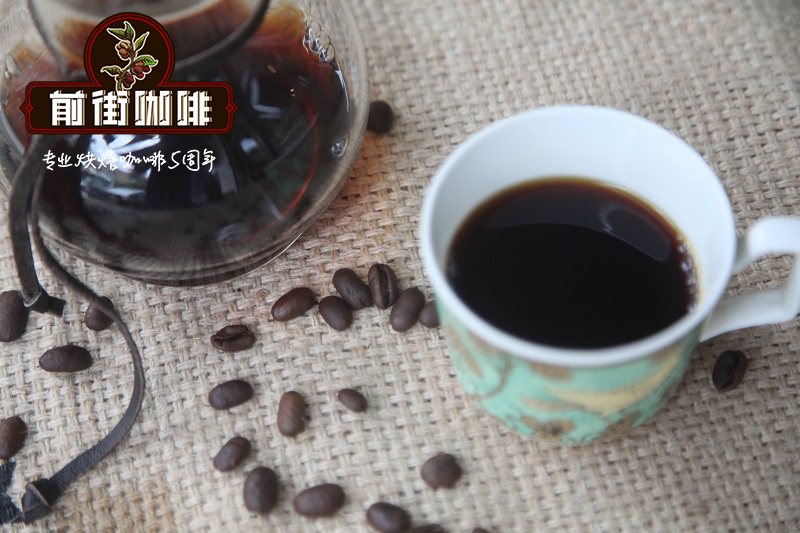Panamanian coffee style geisha coffee flavor and taste

Professional coffee knowledge exchange more coffee bean information please follow the coffee workshop (Wechat official account cafe_style)
The coffee book Coffee basics-a quick and easy guide (Kevin Knox, John Wiley & Sons Publishings) describes Panamanian coffee as follows: "it is at best similar to coffee produced in the Tres Rios region of Costa Rica: balanced, light, and only suitable for morning refreshing." If the author republishes the book today, these few numbers will certainly be rewritten. Over the past 16 years, Panama has changed from a country that grows coffee for domestic sales to a legend in the international industry.
Panama is located at the southern tip of Central America, bordering Colombia. If you ask your peers about their impression of this country, they will probably answer "Canal". The isthmus (isthmus), located in the North and South American continent, has been of great strategic value since the 16th century (Columbus era). In the early 19th century, Panama was politically more southward, and at one point formed the Greater Republic of Colombia (Gran Colombia) with Colombia, Vaguadore and Venezuela. But since 1903, it has seceded from the alliance with the help of the United States, and its national fortune was destined to be linked to the United States at the moment the canal was built. The Panama Canal, which runs through Central America and connects the Pacific Ocean, the Caribbean and the Atlantic Ocean, has not only opened up shipping trade, but also brought a great deal of agricultural knowledge from the United States and Europe; many retirees in North America chose to settle in Panama with a mild climate and a low cost of living index, which indirectly contributed to the stories of boutique coffee legends and emerald estates.
North Wind increases Coffee fructose content
Compared with the commercial towns built around canals in the east, the western mountains bordering Costa Rica are dominated by farming. The Chiriqui province has a good infrastructure, so coffee has been grown in areas such as Bouquete and Volcan since it was introduced from Costa Rica in 1820. Although the production capacity is only 1/10 of that of the former (2007), its unique microclimate (micro-climate) is particularly suitable for the growth of boutique coffee: the country's Rain Water, sometimes from the Pacific, sometimes from the Atlantic. At the end of the rainy season, a northerly wind that locals call "Bajareque" blows through the mountains like air-conditioning, slowing down the ripening rate of coffee fruit and raising sugar content. Farmers usually hire indigenous Nobes to take charge of the harvest. With the help of the United States, the world's largest consumer of coffee, Panama's processing technology is among the best in Latin America.
"Geisha" Yang Wei
Gesha is almost synonymous with modern Panamanian coffee. Before the Feicui Special selection (Esmeralda Special) became famous in 2003, the common beans in the country were Typica, Caturra, San Ramon (Brazilian Typica variety) and Mundo Novo. The Panamanian Fine Coffee Association (SCAP) was founded in 1997, and the National Competition (Best of Panama,BOP) held in the same year was two years earlier than the first COE! This year's BOP is divided into three groups: "traditional Coffee: washing or Honey treatment", "Solar-Geisha and non-Geisha" and "Water washing Geisha". Geisha coffee stands out from the crowd and has been at the forefront of the competition for many years since 2003. In addition, the division of the treatment method is becoming more and more obvious, which shows that similar grouping methods will be adopted in competitions in other countries in the future.
Important Notice :
前街咖啡 FrontStreet Coffee has moved to new addredd:
FrontStreet Coffee Address: 315,Donghua East Road,GuangZhou
Tel:020 38364473
- Prev

Perfect Italian concentration starts with grease. How to do Italian concentration?
Professional coffee knowledge exchange more coffee bean information Please pay attention to the coffee workshop (Wechat official account cafe_style) oil thickness generally has a lot to do with the freshness of beans, too fresh beans, the extracted oil will be very thick, but also quickly dissipate, such oil we think is too rough, so bean cultivation plays an irreplaceable role in the formation of oil
- Next

What are the 11 most common varieties of coffee beans
Professional coffee knowledge exchange more information about coffee beans Please follow the coffee workshop (Wechat official account cafe_style) many years ago, a goat found a coffee tree in Abyssinia, Ethiopia. Shepherd Khaldi noticed that his goat became very excited after eating the berries on the tree. He also gave it a try, and this is the origin of coffee. No matter this
Related
- Beginners will see the "Coffee pull flower" guide!
- What is the difference between ice blog purified milk and ordinary milk coffee?
- Why is the Philippines the largest producer of crops in Liberia?
- For coffee extraction, should the fine powder be retained?
- How does extracted espresso fill pressed powder? How much strength does it take to press the powder?
- How to make jasmine cold extract coffee? Is the jasmine + latte good?
- Will this little toy really make the coffee taste better? How does Lily Drip affect coffee extraction?
- Will the action of slapping the filter cup also affect coffee extraction?
- What's the difference between powder-to-water ratio and powder-to-liquid ratio?
- What is the Ethiopian local species? What does it have to do with Heirloom native species?

